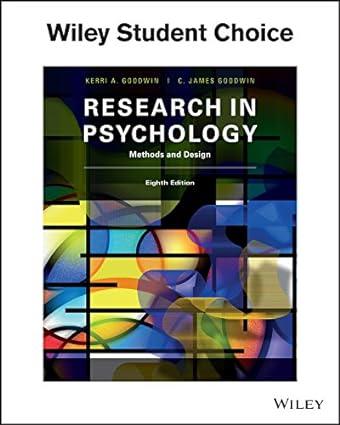Consider each of the following brief descriptions of actual research in social psychology. From the standpoint of
Question:
Consider each of the following brief descriptions of actual research in social psychology. From the standpoint of the APA’s code of ethics, which components could cause problems with an IRB?
Explain how you might defend each study to an IRB.
1. The effect of crowding on stress was investigated in a public men’s room. A member of the research team followed a subject into the bathroom and occupied either the urinal directly adjacent to the subject’s or the next one down the line.
Subjects were unaware they were participating in a study. On the assumption that increased stress would affect urination, the amount of time it took for the subject to begin to urinate and the total time spent urinating were recorded by another researcher hidden in one of the stalls. As predicted, subjects’
urination was more disrupted when the immediately adjacent urinal was occupied (Middlemist, Knowles, & Matter, 1976).
2. In a field experiment, a woman (who was actually part of the experiment) stood by her car on the side of a road. The car had a flat tire. To determine if modeling would affect the helping behavior of passing motorists, on some trials another woman with a flat tire was helped by a stopped motorist (all part of the staged event) about a quarter‐mile before the place where the woman waited for help. As expected, motorists were more likely to stop and help if they had just witnessed another person helping (Bryan & Test, 1967).
3. In the wake of the Watergate scandal, researchers wished to determine if average people could be induced to commit a crime, especially if they thought an arm of government would give them immunity from prosecution. Subjects were recruited by the experimenter, posing as a private investigator, and asked to be part of a break‐in at a local advertising agency said to be involved in tax fraud. Some subjects were told that the IRS was organizing the break‐in and promised immunity from prosecution; others weren’t promised immunity.
A third group was told a competing advertising agency was leading the break‐in, and a fourth group was not told who was behind the crime. The prediction that people would be most willing to participate for a government agency that promised immunity was confirmed; the experiment ended when participants either agreed or disagreed. No break‐in actually occurred
Step by Step Answer:






